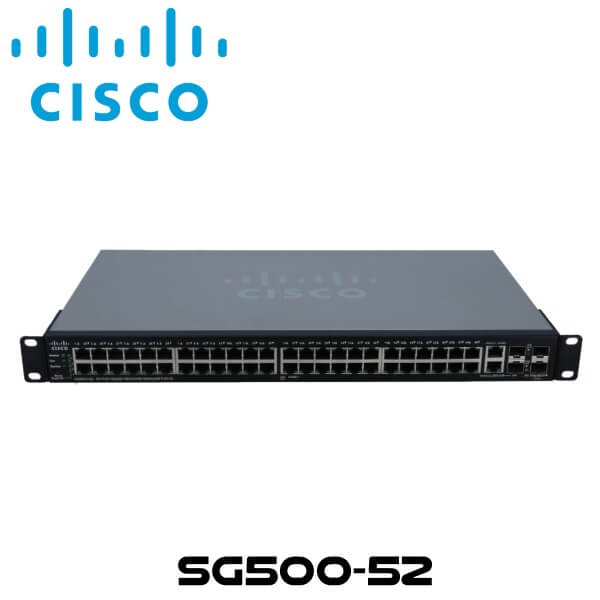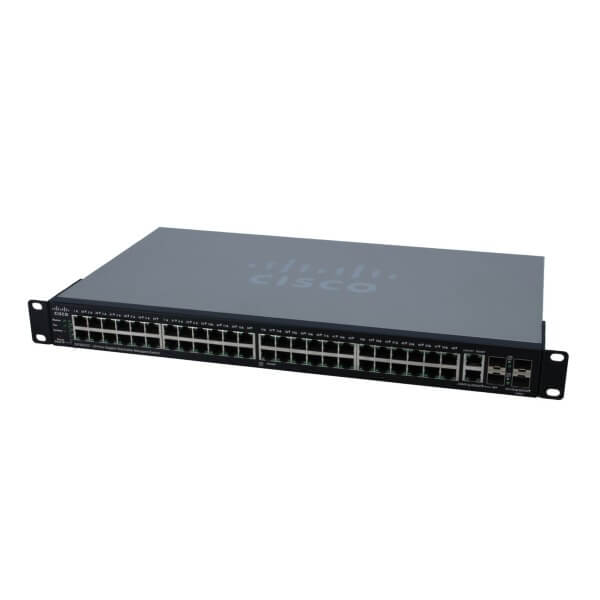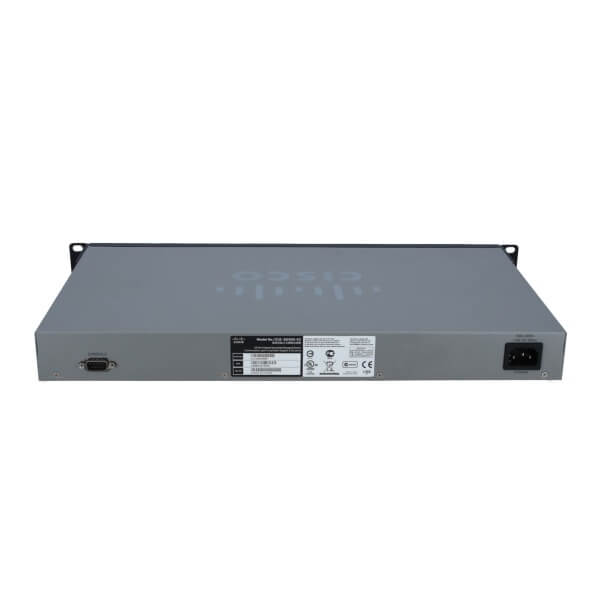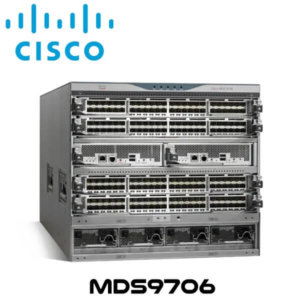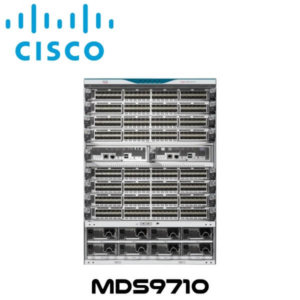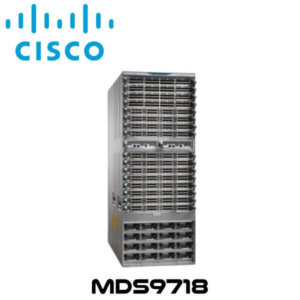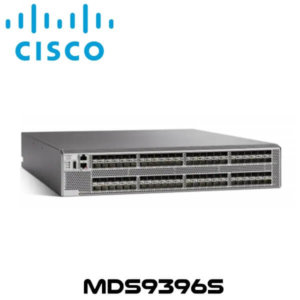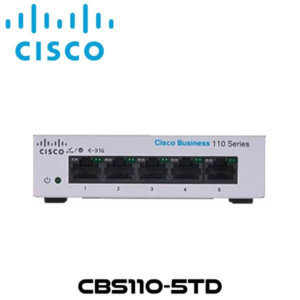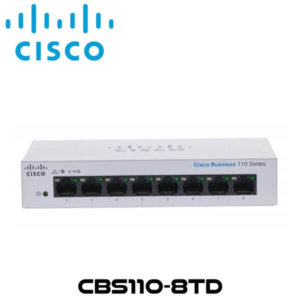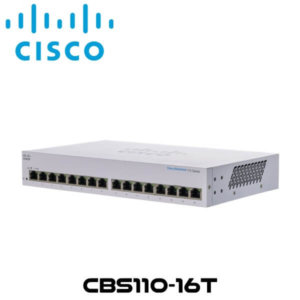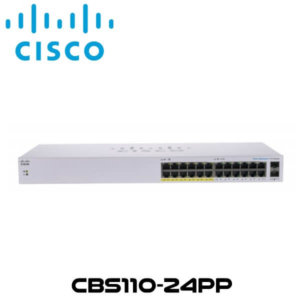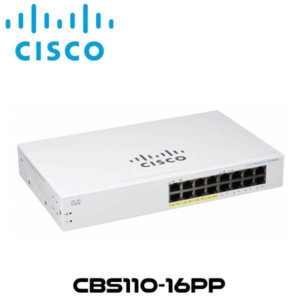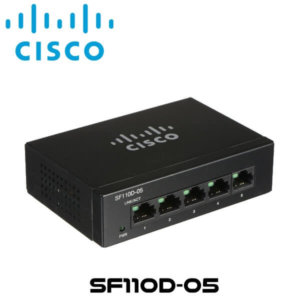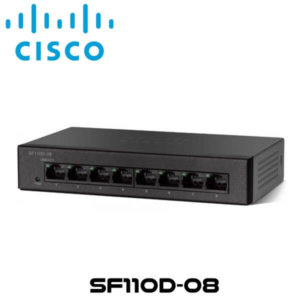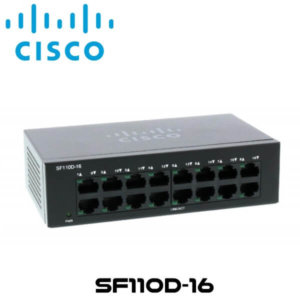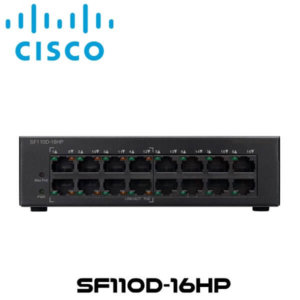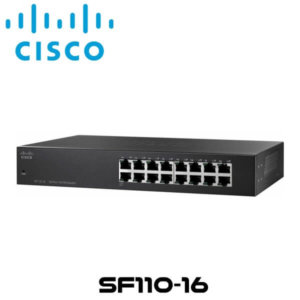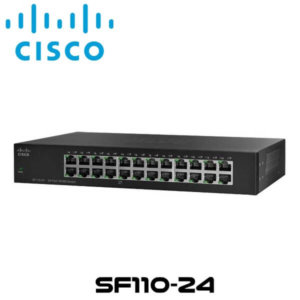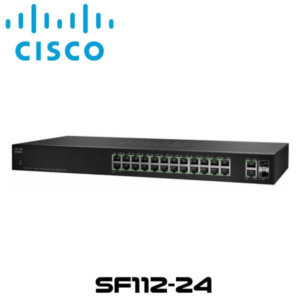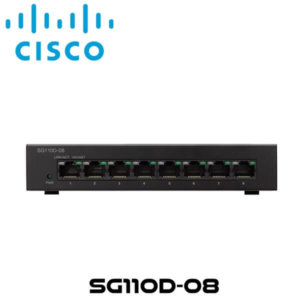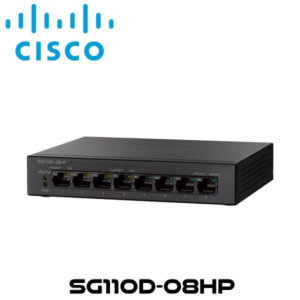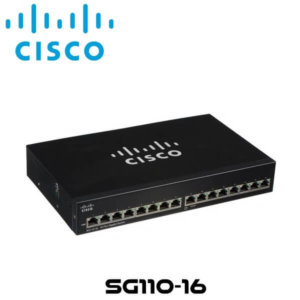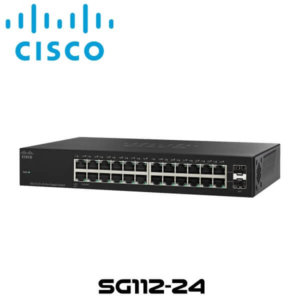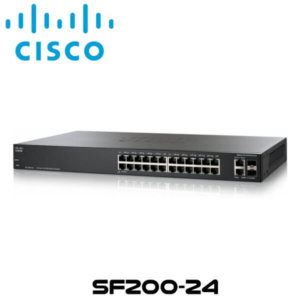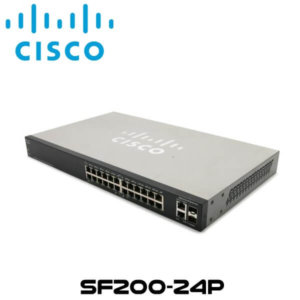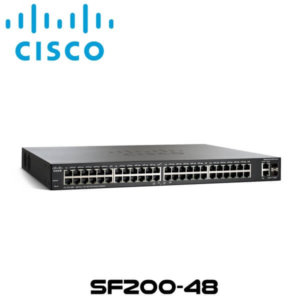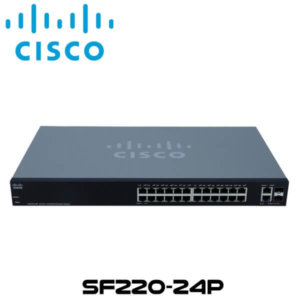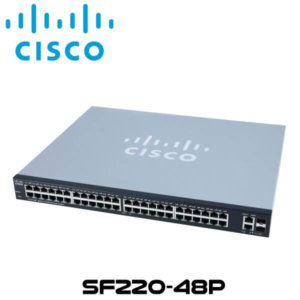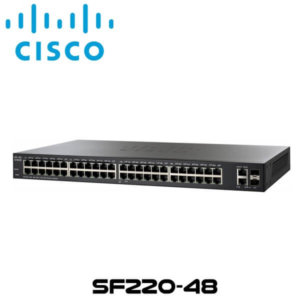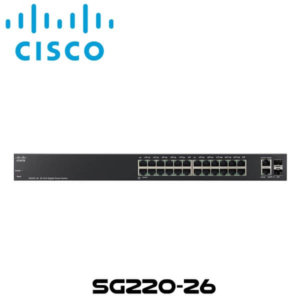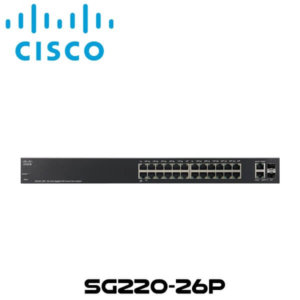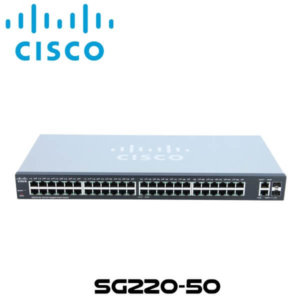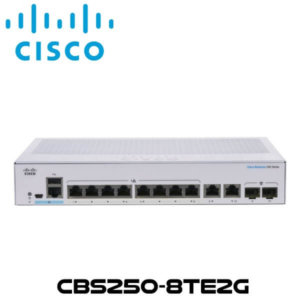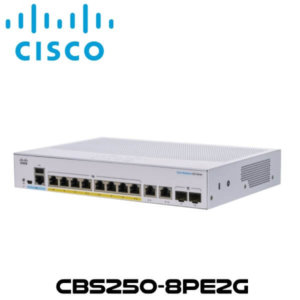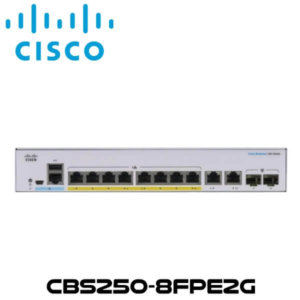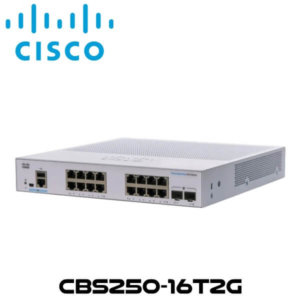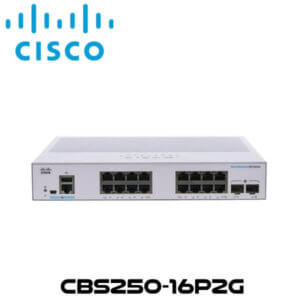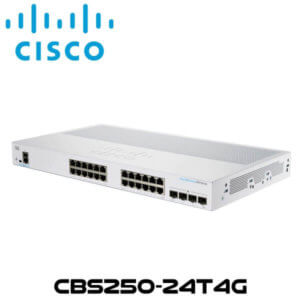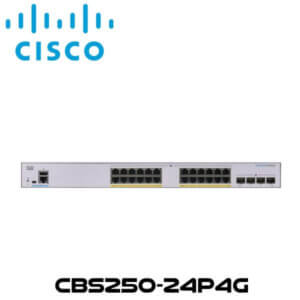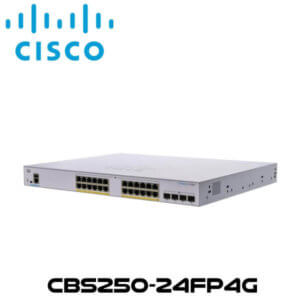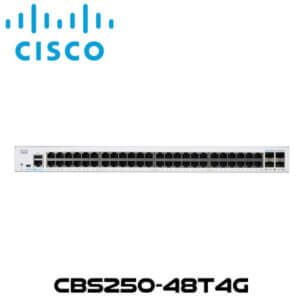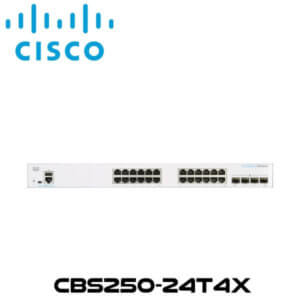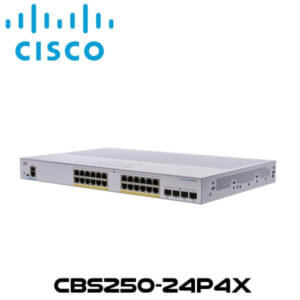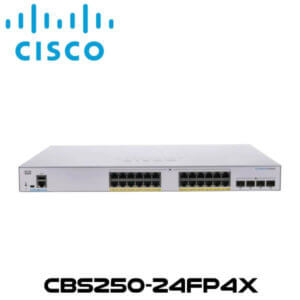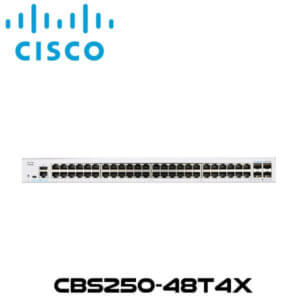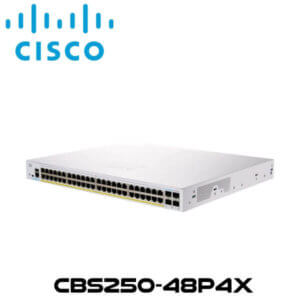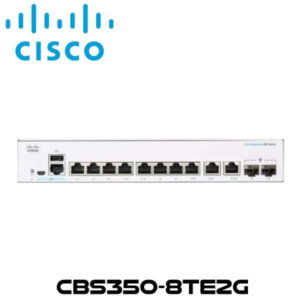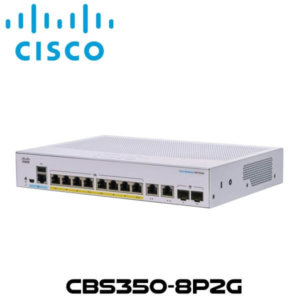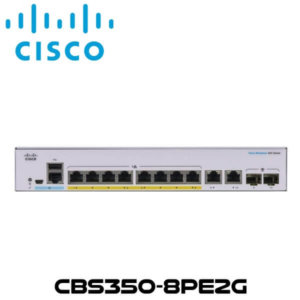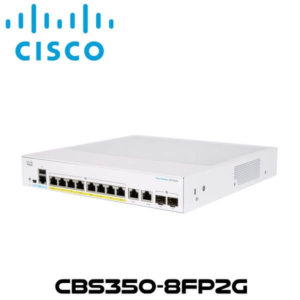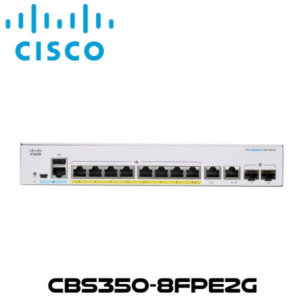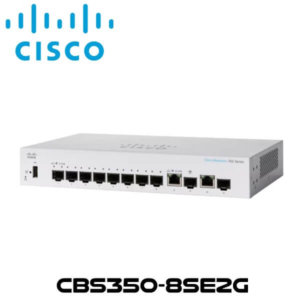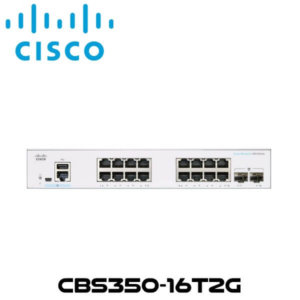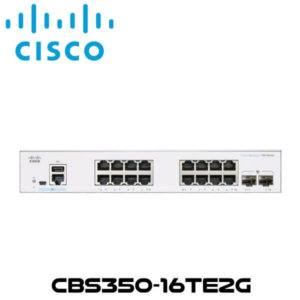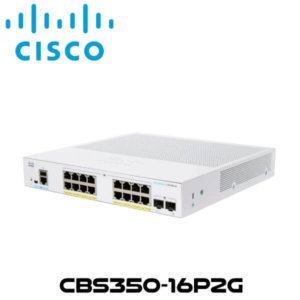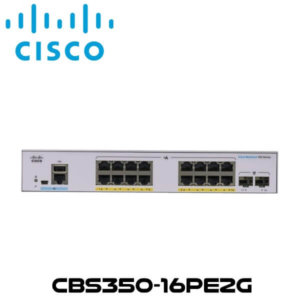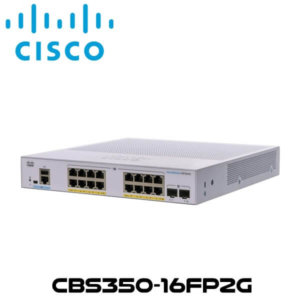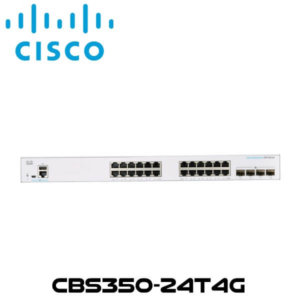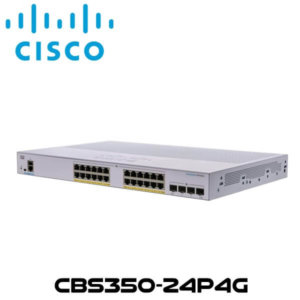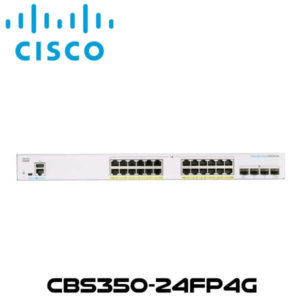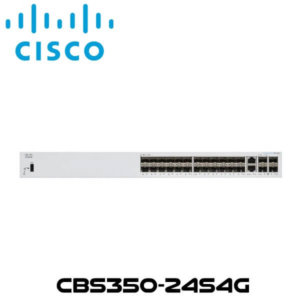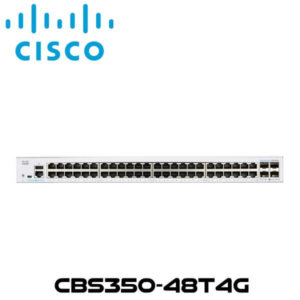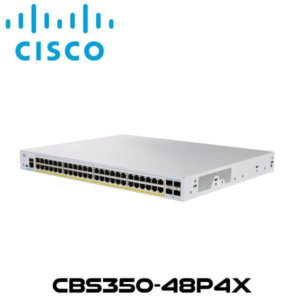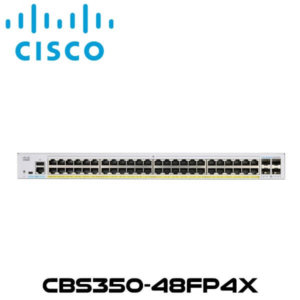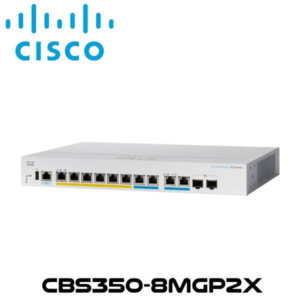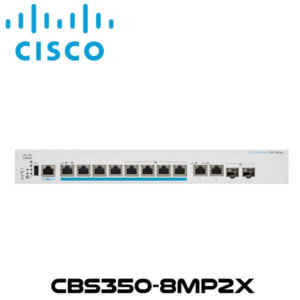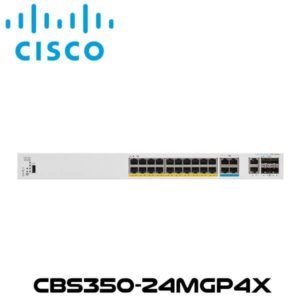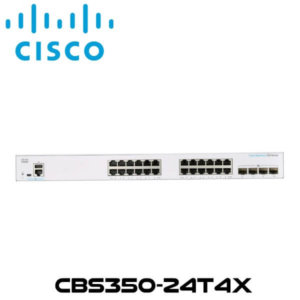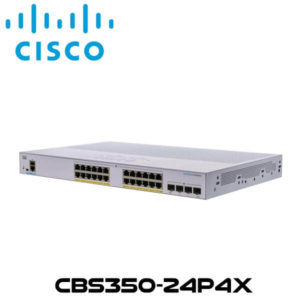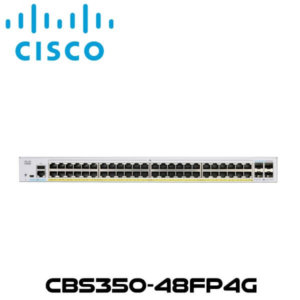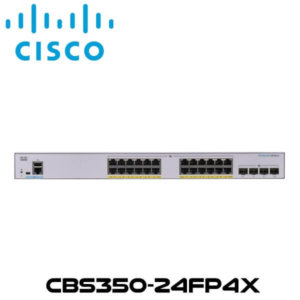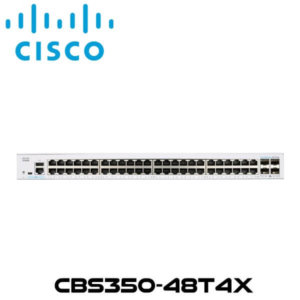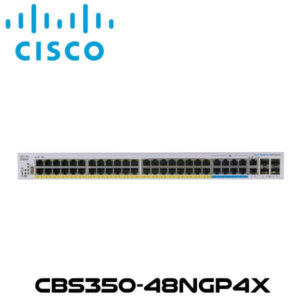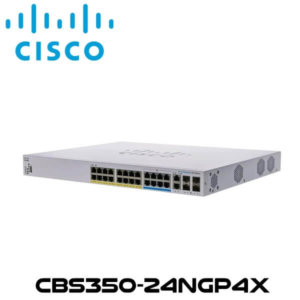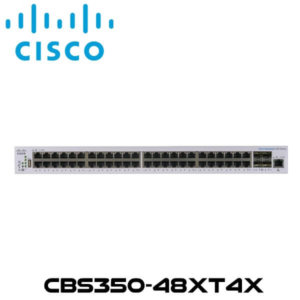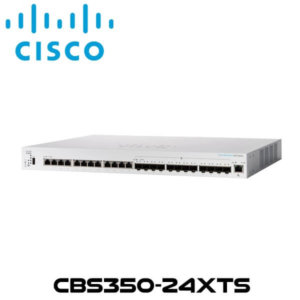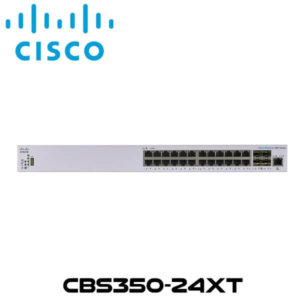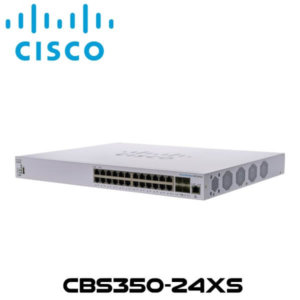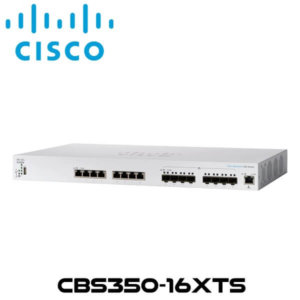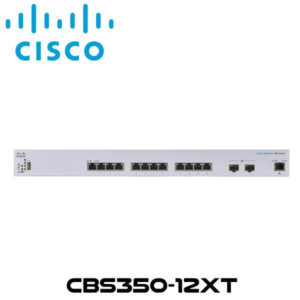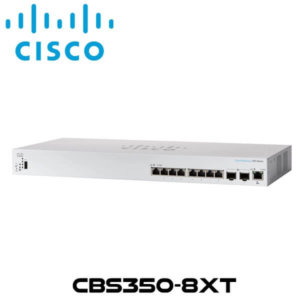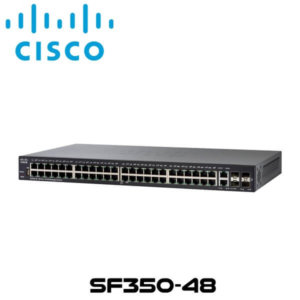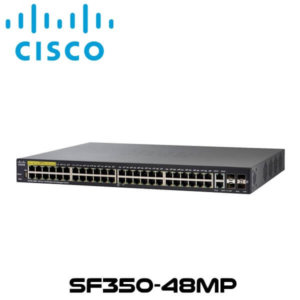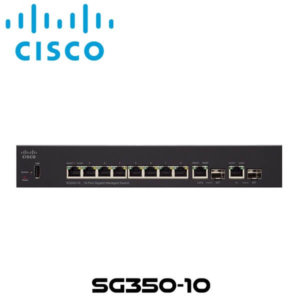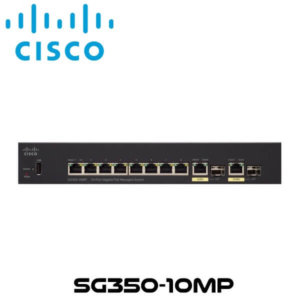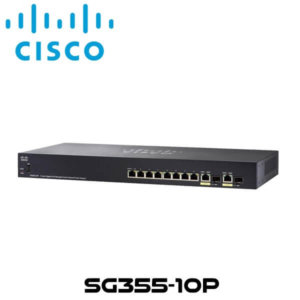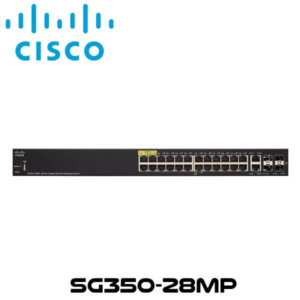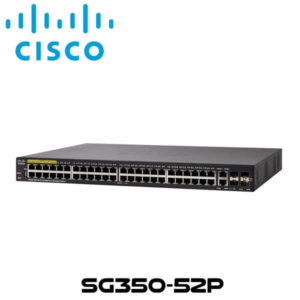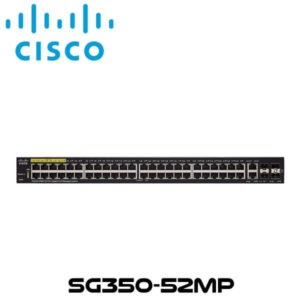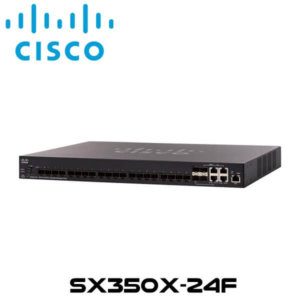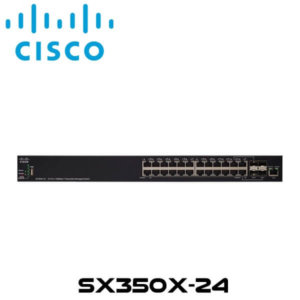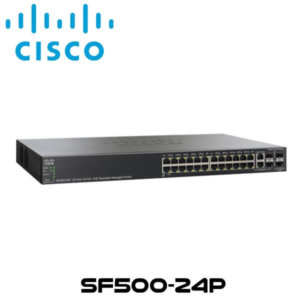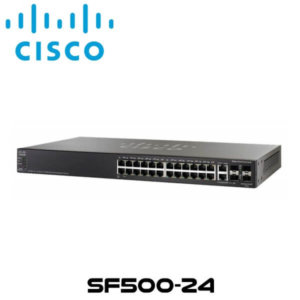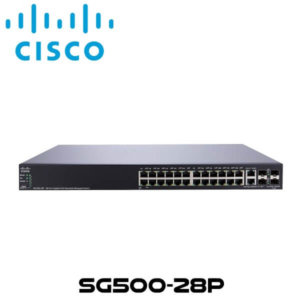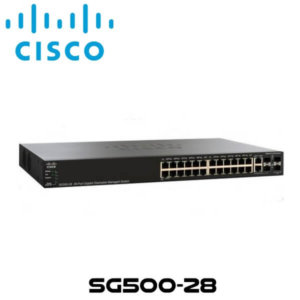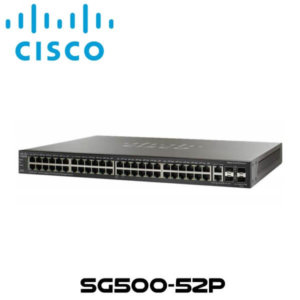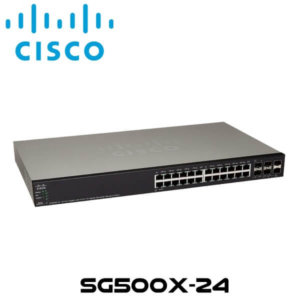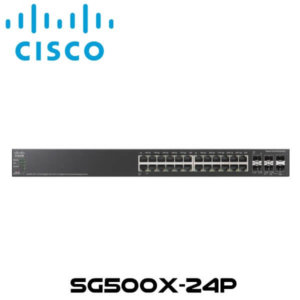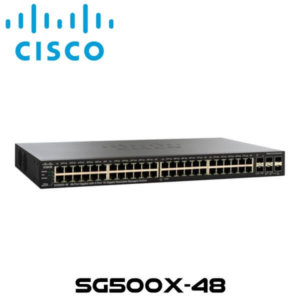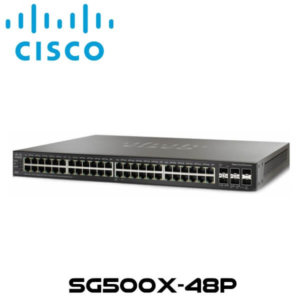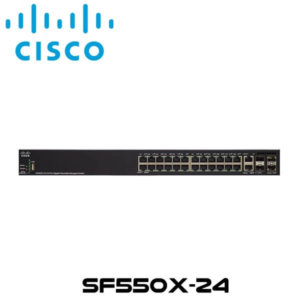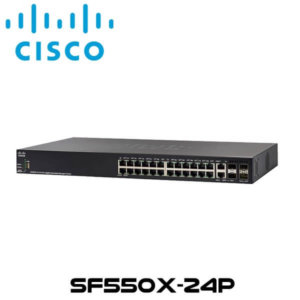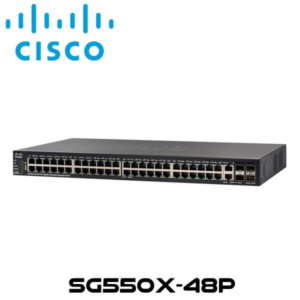Description
Cisco SG500-52 Network Switch Ghana
The Cisco SG500-52 Ghana switch is designed to protect your technology investment as your business grows. The switch provides true stacking capability, allowing you to configure, manage, and troubleshoot multiple physical switches as a single device and more easily expand your network. The Cisco 500 Series switch offer models which are fanless making it one of the industry’s first in stackable switches, thereby delivering increased reliability, power efficiency, and minimizing noise.
A true stack delivers a unified data and control plane, in addition to management plane, providing flexibility, scalability, and ease of use since the stack of units operate as a single entity constituting all the ports of the stack members. The Cisco SG500-52 Ghana switch also protects your technology investment with an enhanced warranty, dedicated technical support, and the ability to upgrade equipment in the future and receive credit for your Cisco 500 Series switch. Overall, Cisco SG500-52 Ghana provides an ideal technology foundation for a growing business.
Features
Easy Deployment
Cisco SG500-52 Ghana switch is designed to be easy to use and manage by small businesses or the partners that serve them. It has the following features:
- Simple-to-use graphical interfaces reduce the time required to deploy, troubleshoot, and manage the network and allow you to support sophisticated capabilities without increasing IT head count.
- You can manage the switches as individual devices or use Cisco Configuration Assistant (CCA) to discover, configure, and manage all Cisco devices in the network.
- The switches also support Textview, a full command-line interface (CLI) option for partners that prefer it.
- Using Auto Smartports intelligence, the switch can detect a network device connected to any port and automatically configure the optimal security, quality of service (QoS), and availability on that port.
- Cisco Discovery Protocol (CDP) discovers Cisco devices and allows devices to share critical configuration information, simplifying network setup and integration.
- Support for Simple Network Management Protocol (SNMP) allows you to set up and manage your switches and other Cisco devices remotely from a network management station, improving IT workflow and mass configurations.
- The Cisco FindIT utility, which works through a simple toolbar on the user’s web browser, discovers Cisco devices in the network and displays basic information, such as serial numbers and IP addresses, to aid in configuration and deployment. (For more information, and to download this free utility, please visit www.cisco.com/go/findit.)
High Reliability and Resiliency
The Cisco SG500-52 Ghana switch provide an additional layer of resiliency with support for the Virtual Router Redundancy Protocol (VRRP). VRRP lets you extend the same resiliency that stacking provides for individual switches to complete network domains. By running VRRP between two stacks, you can instantly cut over from one stack to another in the event of a problem, and continue operating even after a failure. The Cisco SG500-52 Ghana switch also supports dual images, allowing you to perform software upgrades without having to take the network offline or worry about the network going down during the upgrade.
Easy Management
The Cisco SG500-52 Ghana switch helps optimize your IT operations with built-in features that simplify and streamline day-to-day network operation:
- True stacking allows you to troubleshoot, configure, and manage multiple physical switches as a single entity.
- Unlike other stacking switches that require uniform configurations, Cisco SG500-52 Ghana allows you to mix Fast Ethernet, Gigabit Ethernet, and 10 Gigabit Ethernet models in a single stack, providing total flexibility without sacrificing manageability.
- Cisco switches use common chipsets/software across all switching portfolios, so all Cisco switches within a category support the same feature set – making it easier to manage and support all switches across the network.
True Stacking
A true stack delivers a unified data and control plane, in addition to management plane, providing flexibility, scalability, and ease of use since the stack of units operate as a single entity constituting all the ports of the stack members. This capability can radically reduce complexity in a growing network environment while improving the resiliency and availability of network applications. True stacking also provides other cost savings and administrative benefits through features such as cross-stack QoS, VLANs, and port mirroring, which clustered switches can’t support.
Strong Security
The Cisco SG500-52 Ghana provides the advanced security features you need to protect your business data and keep unauthorized users off the network:
- Embedded Secure Sockets Layer (SSL) encryption protects management data traveling to and from the switch.
- Extensive access control lists (ACLs) restrict sensitive portions of the network to keep out unauthorized users and guard against network attacks.
- Guest VLANs let you provide Internet connectivity to nonemployee users while isolating critical business services from guest traffic.
- Support for advanced network security applications such as IEEE 802.1X port security tightly limits access to specific segments of your network. © 2011–2012 Cisco and/or its affiliates. All rights reserved. This document is Cisco Public Information. Page 4 of 16 Data Sheet
- Advanced defense mechanisms, including dynamic Address Resolution Protocol (ARP) inspection, IP Source Guard, and Dynamic Host Configuration Protocol (DHCP) snooping, detect and block deliberate network attacks. Combinations of these protocols are also referred to as IPMB (IP-MACport binding)
- Time based VLANs restrict access to the network during predesignated times, such as business hours.
- Uniform MAC address-based security can be applied automatically to mobile users as they roam between wireless access points.
- Secure Core Technology (SCT) helps ensure that the switch is able to process management traffic in the face of a denial of service attack.
- Private VLAN Edge (PVE) provides Layer 2 isolation between devices on the same VLAN.
- Storm control can be applied to broadcast, multicast, and unknown unicast traffic.
Specifications
| Switching capacity and forwarding rate | Product Name | Capacity in mpps (64-byte packets) |
Switching Capacity (Gbps) |
| SF500-24 | 9.52 | 28.8 | |
| SF500-24P | 9.52 | 28.8 | |
| SF500-48 | 13.10 | 33.6 | |
| SF500-48P | 13.10 | 33.6 | |
| SG500-28 | 41.67 | 72 | |
| SG500-28P | 41.67 | 72 | |
| SG500-52 | 77.38 | 120 | |
| SG500-52P | 77.38 | 120 | |
| SG500X-24 | 95.24 | 128 | |
| SG500X-24P | 95.24 | 128 | |
| SG500X-48 | 130.95 | 176 | |
| SG500X-48P | 130.95 | 176 | |
| Layer 2 Switching | |||
| Spanning Tree Protocol | Standard 802.1d Spanning Tree Support Fast convergence using 802.1w (Rapid Spanning Tree [RSTP]), enabled by default Multiple spanning tree instances using 802.1s (MSTP). 16 instances are supported |
||
| Port grouping/link aggregation |
|
||
| VLAN |
|
||
| Voice VLAN | Voice traffic is automatically assigned to a voice-specific VLAN and treated with appropriate levels of QoS. Auto voice capabilities deliver network-wide zero touch deployment of voice endpoints and call control devices. | ||
| Multicast TV VLAN | Multicast VLAN used for video applications. | ||
| Q-in-Q | VLANs transparently cross over a service provider network while isolating traffic among customers. | ||
| GVRP/GARP | Generic VLAN Registration Protocol (GVRP) and Generic Attribute Registration Protocol (GARP) enable automatic propagation and configuration of VLANs in a bridged domain. | ||
| DHCP Relay at Layer 2 | Relay of DHCP traffic to DHCP server in a different VLAN. Works with DHCP Option 82. | ||
| IGMP (versions 1, 2, and 3) snooping | Internet Group Management Protocol (IGMP) limits bandwidth-intensive multicast traffic to only the requesters; supports 1000 multicast groups (source-specific multicasting is also supported). | ||
| IGMP querier | IGMP querier is used to support a Layer 2 multicast domain of snooping switches in the absence of a multicast router. | ||
| HOL blocking | Head-of-line (HOL) blocking. | ||
| Jumbo Frames | Frames up to 9K (9216) bytes in length. | ||
| Layer 3 | |||
| IPv4 routing | Wirespeed routing of IPv4 packets Up to 128 static routes and up to 128 IP interfaces | ||
| Wirespeed IPv6 Static Routing | Up to 2K (2048) static routes and up to 128 IPv6 interfaces | ||
| CIDR | Support for Classless Inter-Domain Routing | ||
| RIP v2 (on 500X) | Support for Routing Information Protocol version 2, for dynamic routing | ||
| VRRP (on 500X) | Virtual Router Redundancy Protocol (VRRP) delivers improved availability in a Layer 3 network by providing redundancy of the default gateway servicing hosts on the network. VRRP versions 2 and 3 are supported. Up to 255 virtual routers are supported. | ||
| DHCP Relay | Relay of DHCP traffic across IP domains. | ||
| User Datagram Protocol (UDP) Relay | Relay of broadcast information across Layer 3 domains for application discovery or relaying of BOOTP/DHCP packets. | ||
| Stacking | |||
| Hardware stack | Up to 200 ports managed as a single system with hardware failover. | ||
| High availability | Fast stack failover delivers minimal traffic loss. | ||
| Plug-and-play stacking configuration/management |
|
||
| High-speed stack interconnects | Cost-effective 5G copper and high-speed 10G Fiber and Copper interfaces. | ||
| Mixed stacking support | A stack can consist of a mix of SF500 and SG500 models (mix of 10/100 and Gigabit in the same stack). | ||
| Hybrid stack | A mix of SF500, SG500, and SG500X in the same stack (10/100, Gigabit, and 10 Gigabit). | ||
| Security | |||
| SSH | Secure Shell (SSH) Protocol secures Telnet traffic to and from the switch. SSH versions 1 and 2 are supported. | ||
| SSL | Secure Sockets Layer (SSL) encrypts all HTTPS traffic, allowing secure access to the browser-based management GUI in the switch. | ||
| IEEE 802.1X (Authenticator role) |
|
||
| STP BPDU Guard | A security mechanism to protect the networks from invalid configurations. A port enabled for Bridge Protocol Data Unit (BPDU) Guard is shut down if a BPDU message is received on that port. | ||
| STP Root Guard | Prevents a port from being selected as a root port, effectively preventing bridges in the LAN segment connected to the port from being a root bridge. | ||
| DHCP snooping | Filters out DHCP messages with unregistered IP addresses and/or from unexpected or untrusted interfaces. | ||
| IP Source Guard (IPSG) | When IP Source Guard is enabled at a port, the switch filters out IP packets received from the port if the source IP addresses of the packets have not been statically configured or dynamically learned from DHCP snooping. | ||
| Dynamic ARP Inspection (DAI) | The switch discards ARP packets from a port if there is no static or dynamic IP/MAC bindings or if there is a discrepancy between the source or destination address in the ARP packet. | ||
| Secure Core Technology (SCT) | Ensures that the switch will receive and process management and protocol traffic no matter how much traffic is received. | ||
| Layer 2 isolation (PVE) with community VLAN* | Provides Layer 2 isolation between devices in the same VLAN; supports multiple uplinks. | ||
| Port security | Ability to lock MAC addresses to ports, and limit the number of learned MAC addresses. | ||
| RADIUS/TACACS+ | Supports RADIUS and TACACS authentication. Switch functions as a client. | ||
| RADIUS accounting | The RADIUS accounting functions allow data to be sent at the start and end of services, indicating the amount of resources (such as time, packets, bytes, and so on) used during the session. | ||
| Storm control | Broadcast, multicast, and unknown unicast. | ||
| DoS prevention | DoS attack prevention. | ||
| Congestion avoidance | A TCP congestion avoidance algorithm is required to minimize and prevent global TCP loss synchronization. | ||
| Multiple user privilege levels in CLI | Levels 1, 7, and 15 privilege levels. | ||
| ACLs |
|
||
| Quality of Service | |||
| Priority levels | 8 hardware queues | ||
| Scheduling | Strict Priority and weighted round-robin (WRR) | ||
| Class of service | Port based; 802.1p VLAN priority based; IPv4/v6 IP precedence/ToS/DSCP based; DiffServ; classification and re-marking ACLs, Trusted QoS Queue assignment based on differentiated services code point (DSCP) and class of service (802.1p/CoS) |
||
| Rate limiting | Ingress policer; egress shaping and ingress rate control; per VLAN, per port, and flow based | ||
| Standards | |||
| Standards | IEEE 802.3 10BASE-T Ethernet, IEEE 802.3u 100BASE-TX Fast Ethernet, IEEE 802.3ab 1000BASE-T Gigabit Ethernet, IEEE 802.3ad Link Aggregation Control Protocol, IEEE 802.3z Gigabit Ethernet, IEEE 802.3x Flow Control, IEEE 802.3 ad LACP, IEEE 802.1D (STP, GARP and GVRP), IEEE 802.1Q/p VLAN, IEEE 802.1w Rapid STP, IEEE 802.1s Multiple STP, IEEE 802.1X Port Access Authentication, IEEE 802.3af, IEEE 802.3at, RFC 768, RFC 783, RFC 791, RFC 792, RFC 793, RFC 813, RFC 879, RFC 896, RFC 826, RFC 854, RFC 855, RFC 856, RFC 858, RFC 894, RFC 919, RFC 922, RFC 920, RFC 950, RFC 951, RFC 1042, RFC 1071, RFC 1123, RFC 1141, RFC 1155, RFC 1157, RFC 1350, RFC 1533, RFC 1541, RFC 1542, RFC 1624, RFC 1700, RFC 1867, RFC 2030, RFC 2616, RFC 2131, RFC 2132, RFC 3164, RFC 3411, RFC 3412, RFC 3413, RFC 3414, RFC 3415, RFC 2576, RFC 4330, RFC 1213, RFC 1215, RFC 1286, RFC 1442, RFC 1451, RFC 1493, RFC 1573, RFC 1643, RFC 1757, RFC 1907, RFC 2011, RFC 2012, RFC 2013, RFC 2233, RFC 2618, RFC 2665, RFC 2666, RFC 2674, RFC 2737, RFC 2819, RFC 2863, RFC 1157, RFC 1493, RFC 1215, RFC 3416 | ||
| IPv6 | |||
| IPv6 |
|
||
| IPv6 QoS | Prioritize IPv6 packets in hardware | ||
| IPv6 ACL | Drop or Rate Limit IPv6 packets in hardware | ||
| Multicast Listener Discovery (MLD v1/2) snooping | Deliver IPv6 multicast packets only to the required receivers | ||
| IPv6 applications | Web/SSL, Telnet Server/SSH, Ping, Traceroute, SNTP, TFTP, SNMP, RADIUS, Syslog, DNS client, DHCP Client, DHCP Autoconfig, IPv6 DHCP Relay, TACACS | ||
| IPv6 RFC supported |
|
||
| Management | |||
| Web user interface | Built-in switch configuration utility for easy browser-based device configuration (HTTP/HTTPS). Supports configuration, system dashboard, system maintenance and monitoring. | ||
| SNMP | SNMP versions 1, 2c, and 3 with support for traps, and SNMP v3 User-based Security Model (USM) | ||
| Standard MIBs |
|
|
|
| Private MIBs |
|
|
|
| RMON | Embedded RMON software agent supports 4 RMON groups (history, statistics, alarms, and events) for enhanced traffic management, monitoring, and analysis | ||
| IPv4 and IPv6 Dual Stack | Coexistence of both protocol stacks to ease migration | ||
| Firmware upgrade |
|
||
| Port mirroring | Traffic on a port can be mirrored to another port for analysis with a network analyzer or RMON probe. Up to 8 source ports can be mirrored to one destination port. | ||
| VLAN mirroring | Traffic from a VLAN can be mirrored to a port for analysis with a network analyzer or RMON probe. Up to 8 source VLANs can be mirrored to one destination port. | ||
| DHCP (Options 12, 66, 67, 82, 129, and 150) | DHCP options facilitate tighter control from a central point (DHCP Server), to obtain IP address, auto configuration (with configuration file download), DHCP Relay, and host name. | ||
| Auto configuration with Secure Copy (SCP) file download | Enables secure mass deployment with protection of sensitive data. | ||
| Text-editable configs | Config files can be edited with a text editor and downloaded to another switch, facilitating easier mass deployment. | ||
| Smartports | Simplified configuration of QoS and security capabilities. | ||
| Auto Smartports | Automatically applies the intelligence delivered through the Smartports roles to the port based on the devices discovered over Cisco Discovery Protocol or LLDP-MED. This facilitates zero touch deployments. | ||
| Secure Copy (SCP) | Securely transfer files to and from the switch. | ||
| Textview CLI | Scriptable CLI. A full CLI as well as a menu CLI is supported. | ||
| Cloud Services | Support for Cisco Small Business and Cisco OnPlus. | ||
| Localization | Localization of GUI and documentation into multiple languages. | ||
| Login banner | Configurable login banners for web as well as CLI. | ||
| Time-based port operation | Link up or down based on user-defined schedule (when the port is administratively up). | ||
| Other management | Traceroute; single IP management; HTTP/HTTPS; SSH; RADIUS; port mirroring; TFTP upgrade; DHCP client; BOOTP; Simple Network Time Protocol (SNTP); Xmodem upgrade; cable diagnostics; Ping; syslog; Telnet client (SSH secure support); Automatic time settings from Management Station. | ||
| Green (Power Efficiency) | |||
| Energy Detect | Automatically turns power off on Gigabit Ethernet RJ-45 port when detecting link down. Active mode is resumed without loss of any packets when the switch detects the link is up. |
||
| Cable length detection | Adjusts the signal strength based on the cable length. Reduces the power consumption for cable shorter than 10m. Supported on Gigabit Ethernet models. | ||
| EEE compliant (802.3az) | Supports IEEE 802.3az on all Gigabit copper ports. | ||
| Disable port LEDs | LEDs can be manually turned off to save on energy. | ||
| General | |||
| Jumbo frames | Frame sizes up to 9K (9216) bytes. Bare supported on 10/100 and Gigabit Ethernet interfaces. The default MTU is 2K. |
||
| MAC table | 16K (16384) MAC addresses. | ||
| Discovery | |||
| Bonjour | The switch advertises itself using the Bonjour protocol. | ||
| LLDP (802.1ab) with LLDP-MED extensions | Link Layer Discovery Protocol (LLDP) allows the switch to advertise its identification, configuration, and capabilities to neighboring devices that store the data in a MIB. LLDP-MED is an enhancement to LLDP that adds the extensions needed for IP phones. | ||
| Cisco Discovery Protocol (CDP) | The switch advertises itself using the Cisco Discovery Protocol (CDP). It also learns the connected device and its characteristics via CDP. | ||
| Power over Ethernet (PoE) | |||
| IEEE 802.3af and 802.3at PoE delivered over any of the RJ-45 ports within the listed power budgets | Switches support 802.2af, 802.3at, and Cisco pre-standard (legacy) PoE. Maximum power of 30W to any 10/100 or Gigabit base port until the PoE budget for the switch is reached. The total power available for PoE per switch is: | ||
| Model Name | Power Dedicated to PoE | Number of Ports That Support PoE | |
| SF500-24 | N/A | 0 | |
| SF500-24P | 180W | 24 | |
| SF500-48 | N/A | 0 | |
| SF500-48P | 375W | 48 | |
| SG500-28 | N/A | 0 | |
| SF500-28P | 180W | 24 | |
| SF500-52 | N/A | 0 | |
| SF500-52P | 375W | 48 | |
| SG500X-24 | N/A | 0 | |
| SG500X-24P | 375W | 24 | |
| SG500X-48 | N/A | 0 | |
| SG500X-48P | 375W | 48 | |
| Power consumption (worst case) | |||
| Model Name | Green Power (mode) | Power Consumption (worst case) | Heat Dissipation (BTU/hr) |
| SF500-24 | Energy Detect | 110V/0.226A/13.7W 220V/0.160A/14.8W |
46.5 |
| SF500-24P | Energy Detect | 110V/0.256A/26.1W 220V/0.206A/27W |
84.9 |
| SF500-48 | Energy Detect | 110V/0.445A/24.3W 220V/0.270A/24.8W |
77.9 |
| SF500-48P | Energy Detect | 110V/0.481A/46.8W 220V/0.319A/47.5W |
149.2 |
| SG500-28 | EEE + Short Reach + Energy Detect | 110V/0.0.443A/23.2W 220V/0.262A/23.6W |
74.2 |
| SF500-28P | EEE + Short Reach + Energy Detect | 110V/0.333A/35W 220V/0.238A/35.9W |
112.8 |
| SF500-52 | EEE + Short Reach + Energy Detect | 110V/0.439A/47W 220V/0.230A/47W |
147.7 |
| SF500-52P | EEE + Short Reach + Energy Detect | 110V/0.647A/63.7W 220V/0.405A/64.7W |
203.3 |
| SG500X-24 | EEE + Short Reach + Energy Detect | 110V/0.600A/36.5W 220V/0.348A/36.2W |
114.7 |
| SG500X-24P | EEE + Short Reach + Energy Detect | 110V/0.576A/57.2W 220V/0.365A/57.9W |
181.9 |
| SG500X-48 | EEE + Short Reach + Energy Detect | 110V/0.545A/60.3W 220V/0.378A/60.3W |
189.5 |
| SG500X-48P | EEE + Short Reach + Energy Detect | 110V/0.735A/74.4W 220V/0.444A/75W |
235.7 |
| Ports | |||
| Model Name | Total System Ports | RJ-45 Ports | Combo Ports (RJ-45 + SFP) |
| SF500-24 | 24FE + 4 GE (5G Stacking) | 24 GE | 2 combo GE + 2 1G/5G SFP |
| SF500-24P | 24FE + 4 GE (5G Stacking) | 24 GE | 2 combo GE + 2 1G/5G SFP |
| SF500-48 | 48FE + 4 GE (5G Stacking) | 48 FE | 2 combo GE + 2 1G/5G SFP |
| SF500-48P | 48FE + 4 GE (5G Stacking) | 48 FE | 2 combo GE + 2 1G/5G SFP |
| SG500-28 | 24GE + 4 GE (5G Stacking) | 24 GE | 2 combo GE + 2 1G/5G SFP |
| SF500-28P | 24GE + 4 GE (5G Stacking) | 24 GE | 2 combo GE + 2 1G/5G SFP |
| SF500-52 | 48GE + 4 GE (5G Stacking) | 48 GE | 2 combo GE + 2 1G/5G SFP |
| SF500-52P | 48GE + 4 GE (5G Stacking) | 48 GE | 2 combo GE + 2 1G/5G SFP |
| SG500X-24 | 24GE + 4 10GE | 24 GE | 4 XG SFP+ (Two combo 5G SFP slots) |
| SG500X-24P | 24GE + 4 10GE | 24 GE | 4 XG SFP+ (Two combo 5G SFP slots) |
| SG500X-48 | 48GE + 4 10GE | 48 GE | 4 XG SFP+ (Two combo 5G SFP slots) |
| SG500X-48P | 48GE + 4 10GE | 48 GE | 4 XG SFP+ (Two combo 5G SFP slots) |
| Product Specifications | |||
| Buttons | Reset button | ||
| Cabling type | Unshielded twisted pair (UTP) Category 5 or better; Fiber options (SMF and MMF); Coaxial SFP+ for stacking purposes | ||
| LEDs | LED power savings, System, Link/Act, PoE, Speed | ||
| Flash | 32 MB | ||
| 800 MHz ARM CPU memory | 256 MB | ||
| Package Contents |
|
||


